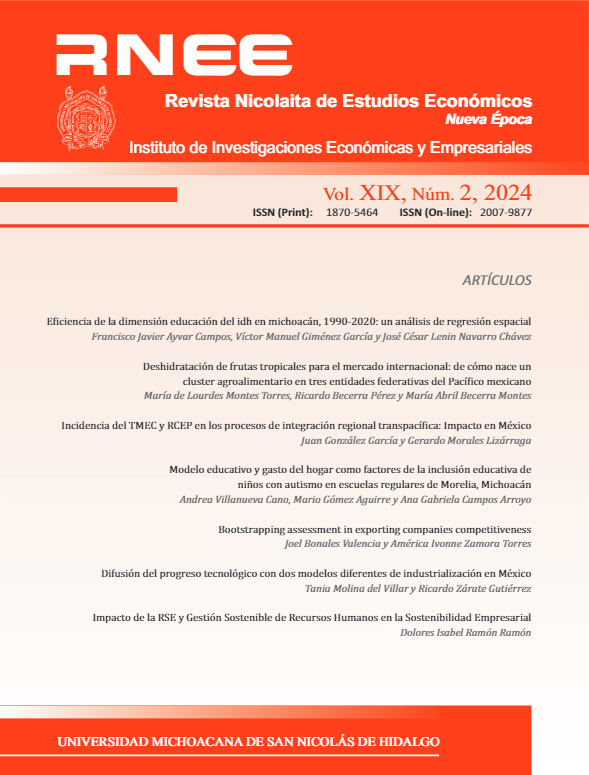Diffusion of technological progress with two different models of industrialization in Mexico
DOI:
https://doi.org/10.33110/rnee.v19i2.362Keywords:
Commercial specialization; Technological progress., input– Output Analysis;Abstract
Based on the analysis of the productive structure of the Mexican economy in the years 1980 and 2013, we seek to
determine whether the type of commercial specialization allows the dissemination of technological progress to
enhance the economic growth of the country. The study is based on the use of Haukness and Knell's (2009)
classification of technological sectors and input-output analysis, specifically, the methodology of vertically
integrated sectors and its application in network analysis. The conclusion reached is that the current pattern of
commercial specialization, based on the exports of goods with a high degree of technological intensity, cannot be
considered an engine of economic growth, given that these sectors are disconnected from the internal productive
structure, limiting the diffusion and assimilation of any type of technological advance.
Downloads
Published
How to Cite
Issue
Section
License

This work is licensed under a Creative Commons Attribution-NonCommercial-NoDerivatives 4.0 International License.








